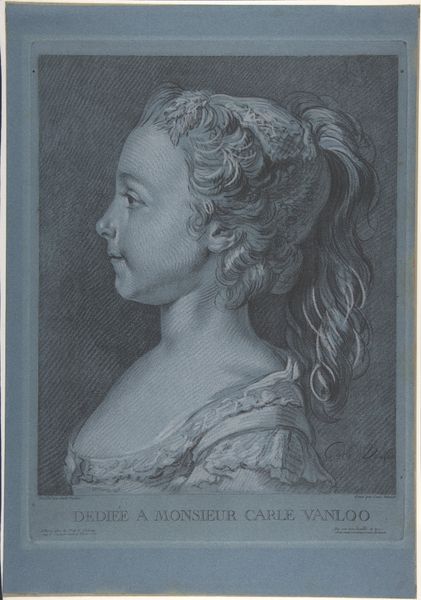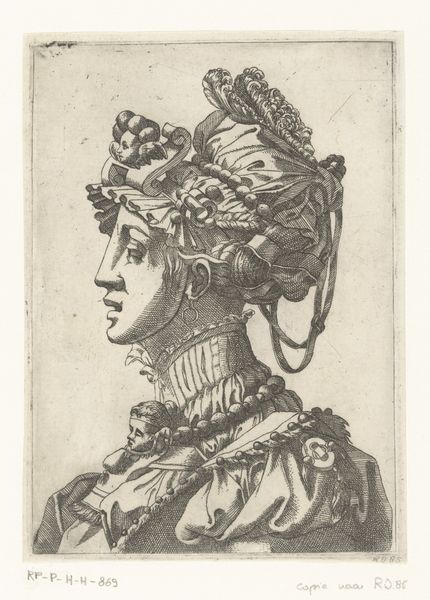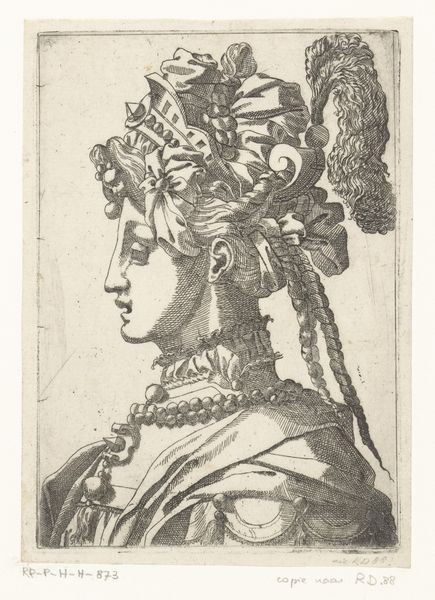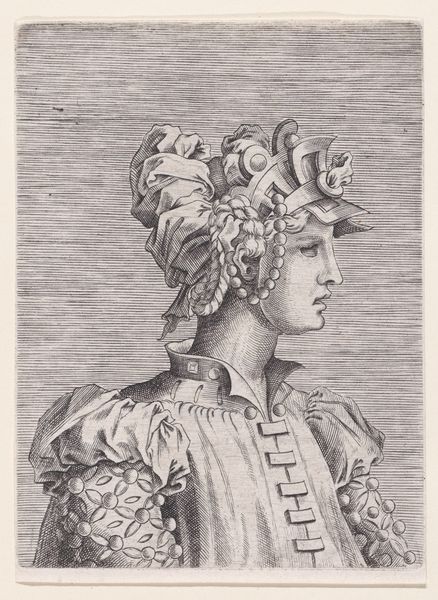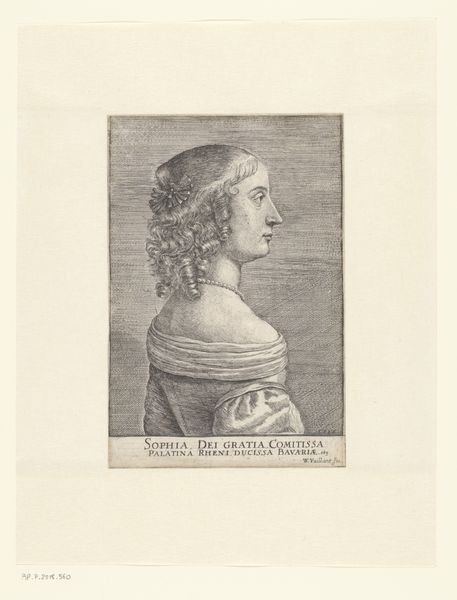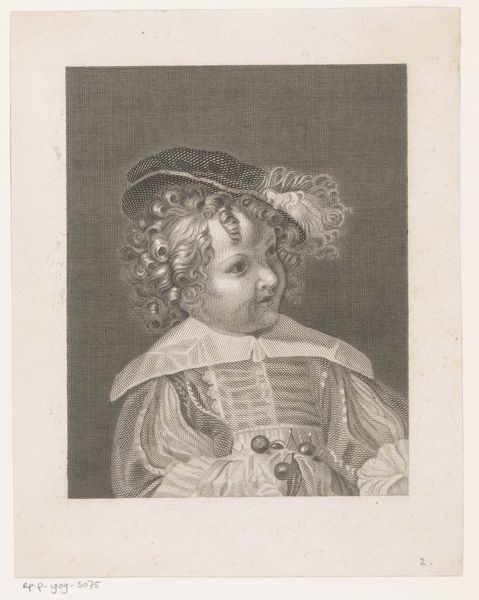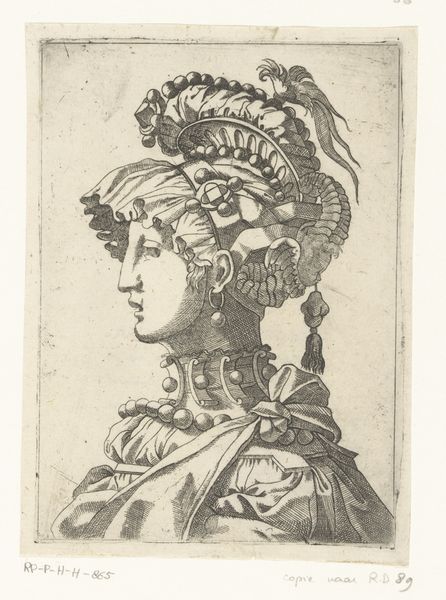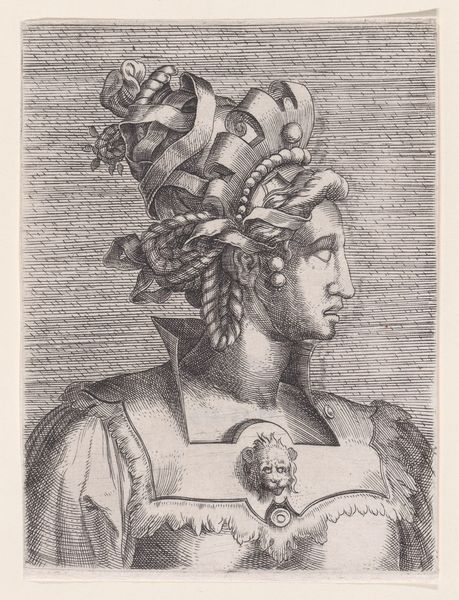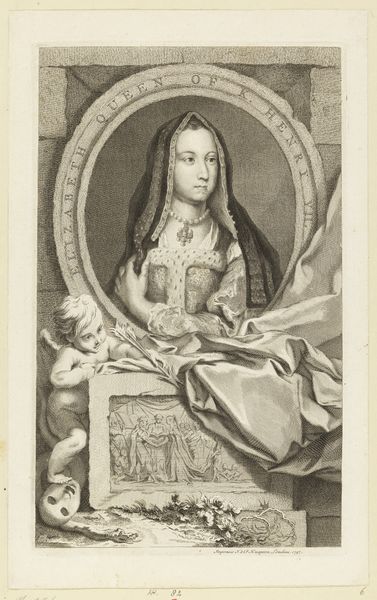
drawing, print, engraving
#
portrait
#
drawing
#
neoclacissism
# print
#
figuration
#
historical fashion
#
line
#
history-painting
#
academic-art
#
engraving
Dimensions: Sheet (Trimmed): 16 in. × 11 7/16 in. (40.6 × 29.1 cm)
Copyright: Public Domain
Curator: Let’s turn our attention to this engraving: "Sappho to Phoebus Consecrates her Lyre" by Robert Strange, dating back to 1787. Editor: There's a subdued power in the engraving's presentation of Sappho. The detail, achieved solely through line, gives the scene a striking, almost austere quality. The laurel crown immediately marks her association with artistic accomplishment, the star-spangled gown is also striking. Curator: Absolutely. This print speaks to the Neoclassical revival of interest in antiquity and the figures that defined it, though it would seem that Strange has taken inspiration from a painting by Carlo Dolci for his print, as referenced by the inscription in the lower right margin. Robert Strange would have undoubtedly aimed to portray Sappho not just as a poet but as an emblem of female creative agency within the established classical tradition. Editor: Sappho's gaze, directed off to the side, possesses a sense of longing or even a plea for artistic validation by a male god. Is there an underlying tension in how female genius is presented? Does the work grapple with the social constraints that Sappho, as a female artist, navigated? The emphasis on classical tradition—the laurel crown, the lyre—perhaps unintentionally underscores those barriers. Curator: A very astute observation. And it prompts a deeper consideration of how artists depicted historical or mythical women to reinforce existing patriarchal structures. Note, for example, how even her act of dedicating the lyre is immortalized not as one of assured genius but as one of devotion towards Phoebus Apollo. The piece arguably perpetuates, not challenges, conventional interpretations of female roles in artistic creation. Editor: And to reflect briefly on our encounter with Robert Strange’s Sappho. The dialogue reveals deeper questions about gender, artistic agency, and the complex legacies of representation, but the symbolic details in the imagery bring into view cultural forces still resonant today. Curator: A sentiment well shared. "Sappho to Phoebus Consecrates her Lyre," ultimately offers more than just aesthetic appreciation. It challenges viewers to unpack the social scripts inherent within the art itself.
Comments
No comments
Be the first to comment and join the conversation on the ultimate creative platform.
